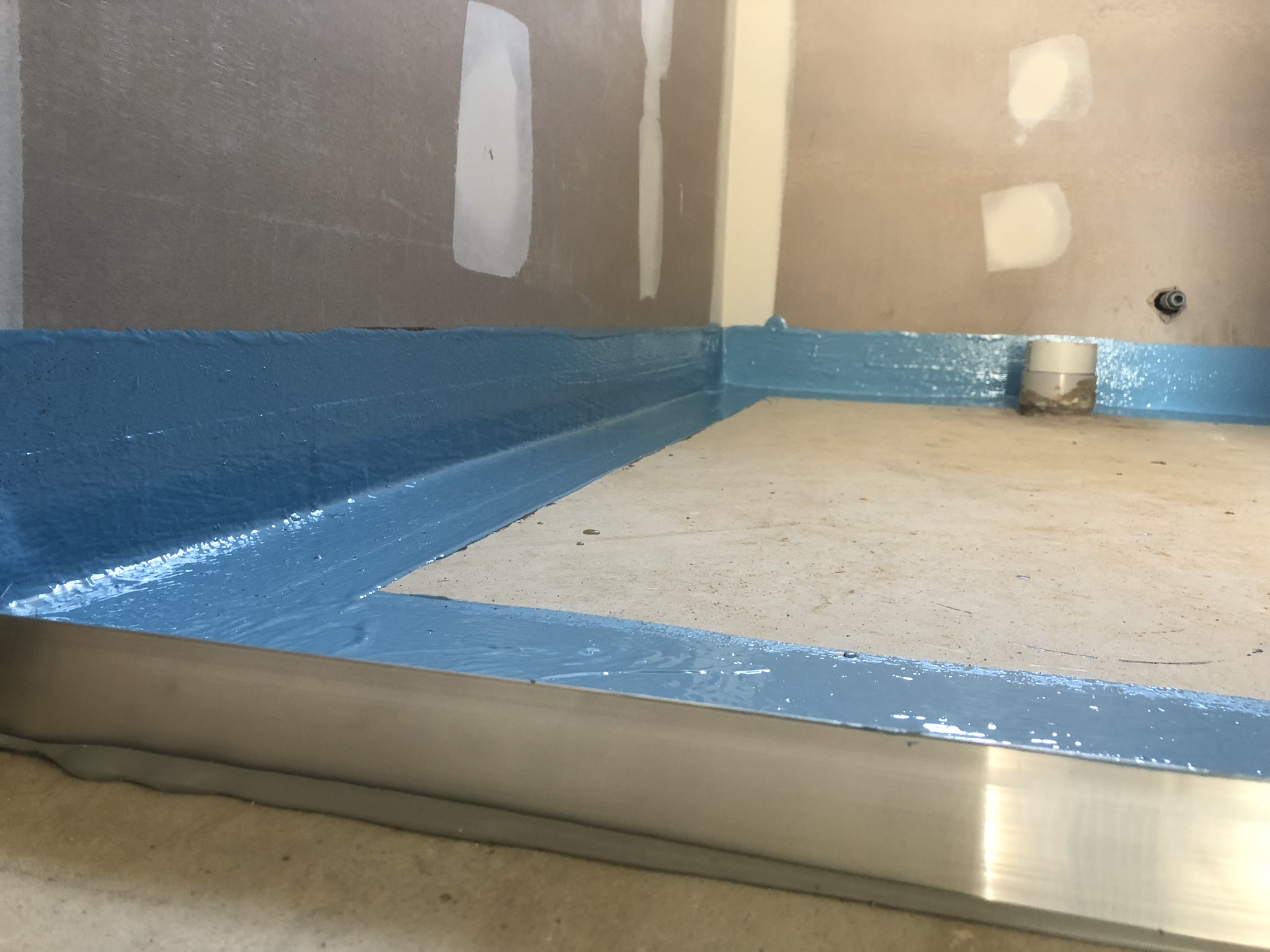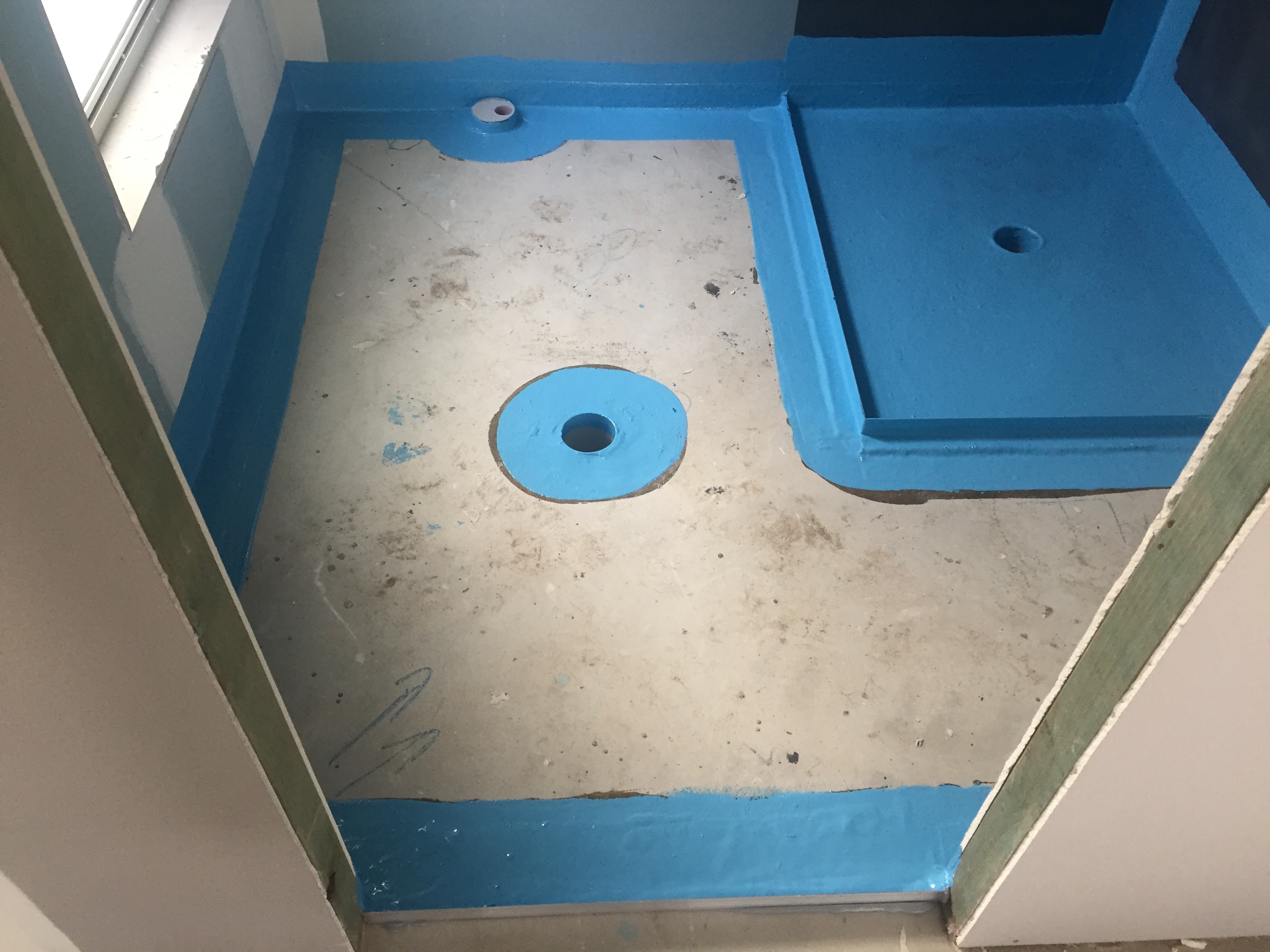Understanding Bathroom Waterproofing Needs: Best Waterproofing Membrane For Bathrooms

Bathrooms are inherently susceptible to water exposure, making waterproofing a critical aspect of their construction and maintenance. A well-waterproofed bathroom safeguards your home from costly repairs and potential health hazards associated with water damage.
Causes of Bathroom Leaks and Water Damage, Best waterproofing membrane for bathrooms
Water damage in bathrooms can stem from various sources, often leading to structural issues, mold growth, and unpleasant odors. Understanding these common culprits helps you take proactive measures to prevent them.
- Leaky Faucets and Fixtures: Worn-out washers, loose connections, or faulty plumbing can lead to persistent dripping, gradually damaging surrounding surfaces and potentially causing water damage.
- Showerheads and Shower Valves: Over time, showerheads and valves can develop leaks, particularly in areas with hard water. The constant flow of water can seep into walls and ceilings, causing significant damage.
- Overflow Drains: Overfilled tubs or sinks can lead to overflows, spilling water onto surrounding areas. This can cause damage to floors, cabinets, and walls.
- Cracked or Damaged Tile Grout: Grout between tiles can crack or deteriorate, allowing water to seep into the underlying structure, leading to mold growth and structural damage.
- Poorly Sealed Tub and Shower Surrounds: Gaps or poorly sealed areas around tubs and showers can allow water to penetrate behind the walls, causing damage to framing and insulation.
- Improper Installation of Waterproofing Membranes: Incorrect installation of waterproofing membranes can lead to gaps or weak spots, allowing water to penetrate and cause damage.
Areas Requiring Waterproofing Attention
Specific areas within a bathroom demand extra care and meticulous waterproofing to prevent leaks and water damage.
- Shower Stalls and Bathtubs: These areas are constantly exposed to water, making them prime targets for leaks. Proper waterproofing is essential to prevent water from seeping into the surrounding walls and floors.
- Floor Surfaces: Bathroom floors should be waterproofed to prevent water from penetrating the subfloor and causing damage to the underlying structure.
- Walls Around Tubs and Showers: The walls surrounding tubs and showers are prone to water damage due to splashing and steam. Waterproofing these areas is crucial to prevent moisture from reaching the framing and insulation.
- Around Sinks and Vanities: Sinks and vanities, although less exposed to water than tubs and showers, can still be susceptible to leaks. Waterproofing around these fixtures helps prevent water damage to surrounding areas.
Types of Waterproofing Membranes

Choosing the right waterproofing membrane is crucial for creating a long-lasting and leak-proof bathroom. There are various types of membranes available, each with its own advantages and disadvantages. Let’s explore some of the most popular options.
Types of Waterproofing Membranes
Different waterproofing membranes are available, each with its own set of advantages, disadvantages, and typical applications. This table provides a comprehensive comparison:
| Membrane Type | Advantages | Disadvantages | Typical Applications |
|---|---|---|---|
| PVC Membrane |
|
|
|
| EPDM Membrane |
|
|
|
| Liquid Membrane |
|
|
|
| Acrylic Membrane |
|
|
|
Installing Waterproofing Membranes
Each type of membrane requires specific installation techniques to ensure proper waterproofing. Here’s a brief overview of the installation process for each:
PVC Membrane Installation
1. Prepare the surface: Clean and dry the surface thoroughly.
2. Apply primer: Apply a primer to enhance adhesion and create a smooth surface.
3. Install the membrane: Lay the PVC membrane over the prepared surface, ensuring it overlaps by at least 2 inches.
4. Seal the seams: Use PVC adhesive to seal the seams and ensure a watertight seal.
5. Apply a sealant: Apply a sealant to the edges and any penetrations to prevent leaks.
EPDM Membrane Installation
1. Prepare the surface: Clean and dry the surface thoroughly.
2. Lay the membrane: Unroll the EPDM membrane over the prepared surface, ensuring it overlaps by at least 6 inches.
3. Secure the membrane: Use adhesive or mechanical fasteners to secure the membrane to the surface.
4. Seal the seams: Use EPDM sealant to seal the seams and ensure a watertight seal.
Liquid Membrane Installation
1. Prepare the surface: Clean and dry the surface thoroughly.
2. Apply primer: Apply a primer to enhance adhesion and create a smooth surface.
3. Apply the membrane: Apply the liquid membrane using a roller or brush, ensuring even coverage and multiple coats for complete waterproofing.
4. Allow drying time: Allow the liquid membrane to dry completely according to the manufacturer’s instructions.
Acrylic Membrane Installation
1. Prepare the surface: Clean and dry the surface thoroughly.
2. Apply primer: Apply a primer to enhance adhesion and create a smooth surface.
3. Apply the membrane: Apply the acrylic membrane using a roller or brush, ensuring even coverage and multiple coats for complete waterproofing.
4. Allow drying time: Allow the acrylic membrane to dry completely according to the manufacturer’s instructions.
Selecting the Best Waterproofing Membrane
Choosing the right waterproofing membrane depends on several factors, including:
- Bathroom size and complexity: Larger and more complex bathrooms may require a more durable and flexible membrane like EPDM or liquid membrane.
- Budget: PVC and acrylic membranes are more affordable than EPDM and liquid membranes.
- Surface type: Different membranes are suitable for different surfaces. For example, liquid membranes can be applied to various surfaces, while PVC membranes are best for smooth surfaces.
- Installation expertise: Some membranes, like EPDM, require specialized tools and expertise for installation.
- Environmental conditions: Membranes should be chosen based on the climate and environmental conditions. For example, EPDM is highly resistant to UV rays and chemicals, making it ideal for outdoor applications.
Best Practices for Bathroom Waterproofing

A well-installed waterproofing membrane is the foundation of a durable and leak-free bathroom. Proper installation ensures long-term protection against water damage, safeguarding your home and preventing costly repairs.
Preparing the Bathroom Surface
Before applying the waterproofing membrane, it is crucial to prepare the bathroom surface thoroughly. This involves removing any existing coatings, debris, and imperfections that could compromise the membrane’s adhesion.
- Remove Existing Coatings: Carefully remove any old tile, grout, paint, or other coatings from the bathroom floor, walls, and shower area. This ensures a clean surface for the membrane to adhere to.
- Clean and Dry the Surface: After removing existing coatings, thoroughly clean the surface with a suitable cleaner to remove any dirt, grease, or residues. Allow the surface to dry completely before proceeding.
- Repair Imperfections: Patch any cracks, holes, or uneven surfaces with a suitable patching compound. Ensure the patching compound is compatible with the chosen waterproofing membrane.
- Prime the Surface: Apply a primer specifically designed for waterproofing membranes to the prepared surface. The primer enhances adhesion and creates a smooth, uniform base for the membrane.
Installing the Waterproofing Membrane
Once the surface is prepared, you can install the waterproofing membrane according to the manufacturer’s instructions.
- Apply the Membrane: Apply the membrane evenly and smoothly to the prepared surface. Use a roller or trowel to ensure a consistent thickness and proper coverage.
- Overlap Seams: Overlap the seams of the membrane by at least 2 inches to create a watertight seal. Use a sealant specifically designed for waterproofing membranes to secure the seams.
- Cure Time: Allow the membrane to cure completely before proceeding with the next steps. The curing time will vary depending on the type of membrane used, so refer to the manufacturer’s instructions.
Sealing and Finishing Around Fixtures, Drains, and Other Penetrations
Proper sealing around fixtures, drains, and other penetrations is essential to prevent water from entering the underlying structure.
- Fixtures and Drains: Use a high-quality sealant specifically designed for bathroom applications to seal around fixtures and drains. Ensure a smooth, continuous bead of sealant is applied to prevent water infiltration.
- Other Penetrations: For penetrations such as pipes and electrical outlets, use a sealant that is compatible with the waterproofing membrane. Apply the sealant according to the manufacturer’s instructions, ensuring a watertight seal.
Choosing the best waterproofing membrane for bathrooms involves considering factors like material, application, and longevity. While a well-sealed bathroom is crucial, a clean one is just as important. A good best bathroom tub scrubber can help maintain hygiene, but a robust waterproofing membrane ensures lasting protection against water damage, ultimately contributing to a healthier and more comfortable bathroom environment.
Choosing the best waterproofing membrane for your bathroom is crucial for preventing water damage and ensuring longevity. A well-sealed bathroom floor and walls are essential for protecting your home from leaks and mold growth. However, even with the best waterproofing, bathroom surfaces can still accumulate hair, which can be challenging to remove.
For this, a specialized vacuum cleaner designed for hair removal, such as those featured in this guide best vacuum for bathroom hair , can be a valuable addition to your cleaning arsenal. Maintaining a clean and hygienic bathroom environment requires a combination of effective waterproofing and proper cleaning tools, ensuring a safe and comfortable space for you and your family.